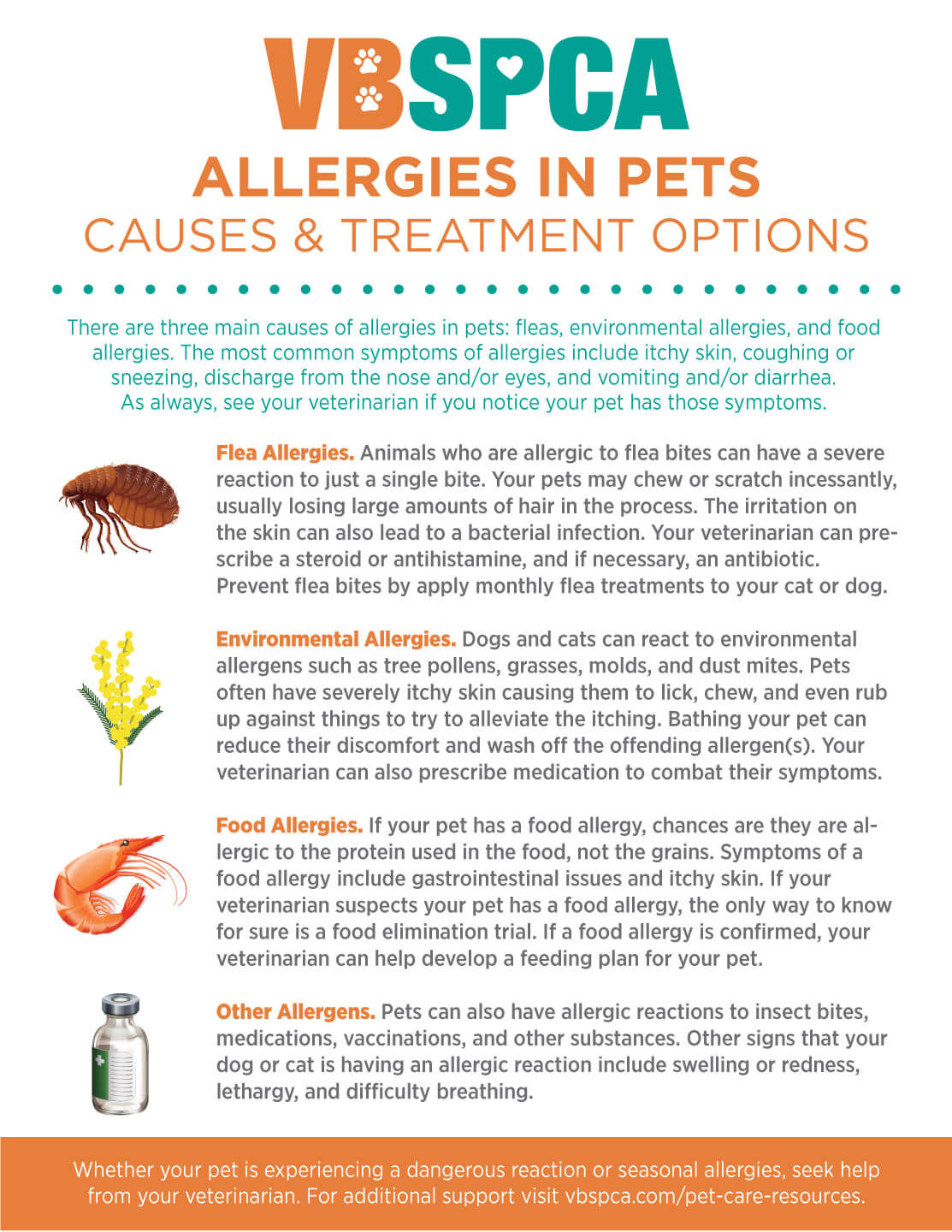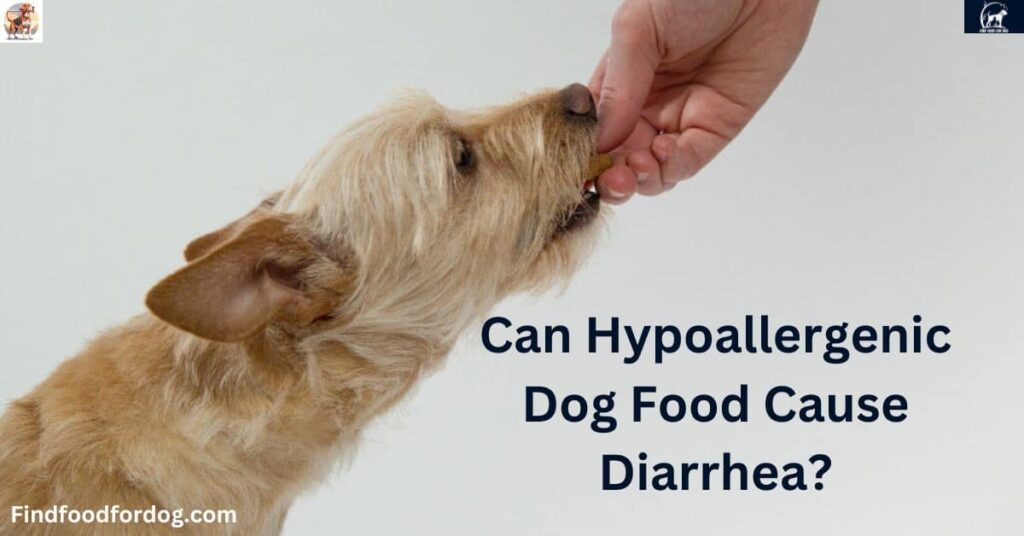Yes, hypoallergenic dog food can cause diarrhea in some dogs. This may occur due to an ingredient intolerance or sudden dietary changes.
Hypoallergenic dog food is designed to minimize allergic reactions in pets. Many dogs suffer from food sensitivities, leading to skin issues and digestive problems. Owners often switch to hypoallergenic options hoping to alleviate these concerns. While these foods can be beneficial, they may not suit every dog.
Some pets might react negatively, resulting in diarrhea. Factors like ingredient changes or an abrupt diet shift can contribute to digestive upset. Understanding your dog's specific needs is crucial for selecting the right food. Always consult a veterinarian before making significant dietary changes to ensure your pet's health and well-being.
Introduction To Hypoallergenic Dog Food
Hypoallergenic dog food helps pets with food allergies. Many dogs suffer from allergies. These can cause serious health issues. Understanding hypoallergenic diets is crucial for pet owners.
Rise In Allergy Awareness
Allergies in dogs are becoming more common. Many pet owners recognize the signs. Dogs may scratch, lick, or have digestive issues. These symptoms can indicate food allergies.
- Increased vet visits for allergy-related issues.
- More information available online.
- Pet owners actively seek solutions.
Awareness leads to better care. Pet owners are now more informed. They seek hypoallergenic foods to protect their pets.
Composition Of Hypoallergenic Diets
Hypoallergenic dog food contains specific ingredients. These diets avoid common allergens. They often include novel proteins and carbohydrates.
| Ingredient Type | Examples |
|---|---|
| Novel Proteins | Duck, Venison, Rabbit |
| Limited Ingredients | Peas, Sweet Potatoes |
| Grain-Free Options | Potato, Tapioca |
These diets aim to reduce allergic reactions. They provide balanced nutrition. Always consult your vet before changing your dog's diet.

Common Allergens In Dog Food
Many dogs experience food allergies. These can lead to various health issues. Understanding common allergens helps in choosing the right hypoallergenic dog food. Some ingredients can trigger reactions, like diarrhea.
Proteins As Potential Triggers
Proteins are a major source of allergens. Many dogs are sensitive to specific types of protein. Here are some common protein sources that may cause issues:
- Beef
- Chicken
- Fish
- Eggs
Symptoms of protein allergies include:
- Diarrhea
- Vomiting
- Itchy skin
Choosing a novel protein can help. Options like lamb or venison may be safer.
Grains And Gluten Sensitivity
Grains can also trigger allergies in some dogs. Gluten sensitivity is common among many breeds. Here are common grains that may cause reactions:
- Wheat
- Barley
- Rye
- Corn
Signs of grain allergies include:
- Diarrhea
- Gas
- Skin irritations
Opting for grain-free food can benefit sensitive dogs. Check labels for gluten-free options.
Symptoms Of Food Allergies In Dogs
Food allergies in dogs can lead to various symptoms. Recognizing these signs early helps in addressing the issue promptly. Common symptoms include skin irritations, gastrointestinal disturbances, and more.
Skin Irritations And Itchiness
Skin issues are a common sign of food allergies. Dogs may experience:
- Red, inflamed skin
- Rash or hives
- Excessive scratching
- Hair loss
Itchiness can lead to more problems. Dogs may bite or lick their skin. This behavior can cause infections and worsen the condition. Always check for signs of irritation.
Gastrointestinal Disturbances
Gastrointestinal issues are also common. Dogs with food allergies may show:
- Diarrhea
- Vomiting
- Gas or bloating
- Loss of appetite
These symptoms can be distressing. Monitor your dog closely. A sudden change in diet may trigger these reactions.
Diarrhea In Dogs: An Overview
Diarrhea in dogs can be a common issue. It can occur for various reasons. Understanding the causes helps in managing your dog's health. Sometimes, hypoallergenic dog food might lead to digestive upset.
Causes Of Diarrhea
Many factors can cause diarrhea in dogs. Here are some common reasons:
- Dietary Changes: Switching food abruptly can irritate the stomach.
- Food Allergies: Some ingredients may not agree with your dog.
- Infections: Bacterial, viral, or parasitic infections can lead to diarrhea.
- Medications: Certain drugs may upset the digestive system.
- Stress: Changes in environment can cause anxiety and diarrhea.
- Underlying Health Issues: Conditions like pancreatitis or liver disease can be culprits.
When To Be Concerned
Most diarrhea cases are not serious. However, some signs indicate a need for concern:
- Diarrhea lasting more than two days.
- Blood in the stool.
- Vomiting alongside diarrhea.
- Signs of dehydration, like excessive thirst.
- Weakness or lethargy.
Seek veterinary advice if you notice any of these signs. Timely action can prevent serious health issues.
Hypoallergenic Food And Digestive Reactions
Hypoallergenic dog food aims to reduce allergic reactions in pets. Some dogs may still experience digestive issues, like diarrhea. Understanding the reasons behind these reactions helps owners make better choices.
The Role Of Novel Ingredients
Many hypoallergenic foods contain novel ingredients. These are proteins and carbohydrates that dogs haven't eaten before. Common novel ingredients include:
- Duck
- Venison
- Rabbit
- Potato
- Quinoa
These ingredients can help reduce food allergies. Yet, some dogs may still react negatively. Symptoms can include:
- Diarrhea
- Vomiting
- Stomach cramps
Monitoring your dog’s reaction to these ingredients is crucial.
Adjustment Period For New Diets
Switching to a new hypoallergenic diet requires time. Dogs need an adjustment period to adapt. This period can last from a few days to weeks. During this time, dogs may experience:
- Loose stools
- Gas
- Change in appetite
To ease the transition, follow these tips:
- Gradually mix new food with old food.
- Increase the amount of new food slowly.
- Monitor your dog's stools daily.
Be patient. Most dogs adjust well over time.
Investigating Diarrhea Causes In Hypoallergenic Diets
Diarrhea in dogs can be concerning. A hypoallergenic diet may help, but it can also cause issues. Understanding the reasons behind diarrhea is crucial for pet owners.
Food Intolerance Vs. Allergy
Many people confuse food intolerance with food allergy. Here are the main differences:
| Aspect | Food Intolerance | Food Allergy |
|---|---|---|
| Immune Response | No | Yes |
| Symptoms | Digestive issues | Skin reactions, swelling |
| Common Triggers | Specific ingredients | Proteins, grains |
Food intolerance often leads to digestive troubles. Dogs may experience diarrhea, gas, or vomiting. Common triggers include:
- Grains
- Beef
- Dairy
Food allergies can cause skin problems. Symptoms include itching or redness. Diarrhea may occur, but it's less common.
Importance Of A Vet Diagnosis
Getting a proper diagnosis is vital. A vet can help determine the cause of diarrhea. They may recommend tests to check for allergies or intolerances.
- Physical exam of your dog
- Allergy testing
- Food trials with hypoallergenic diets
Following a vet's advice is essential. They guide you on suitable hypoallergenic foods. Monitoring your dog's response is important during this process.
Keep a diary of your dog's symptoms. Note any changes after switching foods. This information helps your vet make informed decisions.
Case Studies And Research Findings
Understanding the effects of hypoallergenic dog food is essential. Many dog owners report different outcomes. Some dogs thrive, while others may struggle. Let’s explore real stories and research findings.
Success Stories Of Hypoallergenic Diets
Many dog owners have seen positive changes. Here are some notable success stories:
- Max the Beagle: After switching to hypoallergenic food, Max’s skin allergies improved. His itching and redness reduced significantly.
- Lucy the Poodle: Lucy had chronic diarrhea. A change to a hypoallergenic diet solved her issue within weeks.
- Bella the Golden Retriever: Bella suffered from food sensitivities. A hypoallergenic diet helped her regain energy and vitality.
These stories highlight the potential benefits. Many dogs enjoy better health and happiness.
Instances Of Adverse Reactions
Not all dogs react positively to hypoallergenic diets. Some may experience adverse effects. Here are some examples:
| Dog Name | Reaction | Hypoallergenic Diet Type |
|---|---|---|
| Charlie | Severe diarrhea | Chicken-based |
| Daisy | Vomiting | Fish-based |
| Rocky | Skin rash | Lamb-based |
These instances show that hypoallergenic diets aren’t foolproof. Each dog has unique needs. Consulting a vet is crucial.
Monitoring your dog's response is essential. Adjustments may be needed for optimal health.

Choosing The Right Hypoallergenic Food
Finding the perfect hypoallergenic dog food is essential for your pet's health. Not all hypoallergenic foods are the same. They can vary in ingredients and quality. Understanding how to choose the right one can prevent issues like diarrhea.
Reading Labels And Ingredient Lists
Reading labels is crucial. Look for limited ingredients. This helps reduce the risk of allergens. Here are some tips for reading labels:
- Check for named protein sources, like chicken or lamb.
- Avoid foods with fillers like corn or soy.
- Look for a short ingredient list.
- Identify any artificial additives or preservatives.
Understanding ingredient lists can help you spot potential allergens. Always choose foods that specify the source of the protein. This ensures your dog gets quality nutrition without harmful additives.
Consulting With Nutritionists And Vets
Consulting professionals is vital. A vet or a pet nutritionist can offer personalized advice. They understand your dog's specific needs. Here’s what to ask:
- What ingredients should I avoid?
- How can I transition to a new food?
- What signs should I watch for in my dog?
Professional guidance can help you choose a suitable hypoallergenic food. They can recommend brands that are known for quality and safety. Always prioritize your dog's health and well-being.
Transitioning To A Hypoallergenic Diet
Switching your dog to a hypoallergenic diet requires careful planning. This helps avoid digestive issues like diarrhea. A gradual transition ensures your dog adjusts well.
Gradual Introduction Of New Food
Introduce the new hypoallergenic food slowly. This method reduces the chance of digestive upset. Follow these steps:
- Start with 25% new food mixed with 75% old food.
- After 3-4 days, increase new food to 50%.
- Continue this process until your dog is eating 100% new food.
Each dog is different. Monitor their reaction during this period. Adjust the ratio if you notice any signs of distress.
Monitoring Your Dog's Reaction
Watch your dog closely during the transition. Key signs to monitor include:
- Diarrhea or loose stools
- Vomiting
- Changes in appetite
- Behavior changes
Keep a journal of your dog's reactions. Note any changes in their health. If diarrhea occurs, revert to the previous diet. Consult your vet for guidance.
Alternative Solutions For Dog Diarrhea
Finding effective solutions for dog diarrhea is vital. Many pet owners seek natural methods to support their furry friends. Here are some alternative solutions that can help manage diarrhea.
Probiotics And Digestive Enzymes
Probiotics are beneficial bacteria. They can restore gut health in dogs. These bacteria help balance the digestive system.
Digestive enzymes assist in breaking down food. They improve nutrient absorption and reduce diarrhea. Consider these options for your dog's digestive health:
| Product | Benefits |
|---|---|
| Probiotic Supplements | Restore gut flora, improve digestion |
| Digestive Enzyme Powders | Enhance nutrient absorption, reduce diarrhea |
Home Remedies And Hydration
Home remedies can provide quick relief. Keeping your dog hydrated is crucial. Dehydration worsens diarrhea. Here are some effective home remedies:
- Plain Rice: Easy to digest and helps firm stools.
- Boiled Chicken: Provides protein without added fat.
- Pumpkin Puree: High in fiber, helps normalize stools.
Encourage your dog to drink water. You can also offer:
- Electrolyte solutions for pets.
- Bone broth for added flavor and nutrients.
Monitor your dog's symptoms closely. Seek veterinary advice if diarrhea persists.
Conclusion: Balancing Diet And Health
Finding the right balance between diet and health is essential for your pet. Hypoallergenic dog food can help, but it may also cause digestive issues. Understanding your dog's needs is crucial.
Summarizing Key Points
- Hypoallergenic dog food reduces allergens in your pet's diet.
- Some dogs may still react negatively to new foods.
- Monitor your dog's behavior and digestion closely.
- Consult a vet before changing your dog's diet.
- Look for high-quality, natural ingredients.
Emphasizing Responsible Pet Care
Responsible pet care involves understanding your dog's health. Choose a diet that supports their wellbeing.
- Keep a food diary to track reactions.
- Gradually introduce new foods to avoid digestive upset.
- Provide fresh water and monitor hydration.
- Regular vet visits help maintain your dog's health.
Always prioritize your dog's comfort and happiness. A balanced diet contributes to their overall health. Pay attention to signs of allergies or discomfort.
| Diet Type | Benefits | Potential Issues |
|---|---|---|
| Hypoallergenic | Reduces allergic reactions | Possible diarrhea or upset stomach |
| Grain-free | May improve digestion | Risk of nutritional deficiency |
| Raw food | Natural diet, high energy | Food safety concerns |

Frequently Asked Questions On Can Hypoallergenic Dog Food Cause Diarrhea?
Can Hypoallergenic Dog Food Trigger Diarrhea?
Yes, hypoallergenic dog food can trigger diarrhea in some dogs. This often occurs due to sudden dietary changes or specific ingredients that may still cause sensitivities. Gradually transitioning to a new food can help minimize digestive issues. Always consult your vet if diarrhea persists.
Why Do Some Dogs React To Hypoallergenic Food?
Some dogs may react to hypoallergenic food due to food intolerances. Even hypoallergenic formulas can contain proteins or grains that trigger gastrointestinal upset. Ingredients like novel proteins or carbohydrates may still provoke reactions. A vet can help identify specific sensitivities for better dietary choices.
How Long For Hypoallergenic Food To Show Effects?
It typically takes 8 to 12 weeks to see effects. This timeframe allows your dog’s digestive system to adjust and heal. If symptoms like diarrhea persist beyond this period, consult your veterinarian. They may recommend a different diet or further testing for food allergies.
What Are Signs Of Food Allergies In Dogs?
Signs of food allergies include itching, diarrhea, and vomiting. Your dog may also experience skin irritations or ear infections. These symptoms can vary based on the individual dog and the allergen involved. Always monitor your pet closely and consult a vet for proper diagnosis.
Conclusion
Hypoallergenic dog food can sometimes cause diarrhea due to sudden diet changes or specific ingredient sensitivities. Monitoring your dog’s reaction is essential when introducing new food. Consult your veterinarian for tailored advice. Choosing the right diet ensures your furry friend stays healthy and happy, minimizing digestive issues in the long run.




















